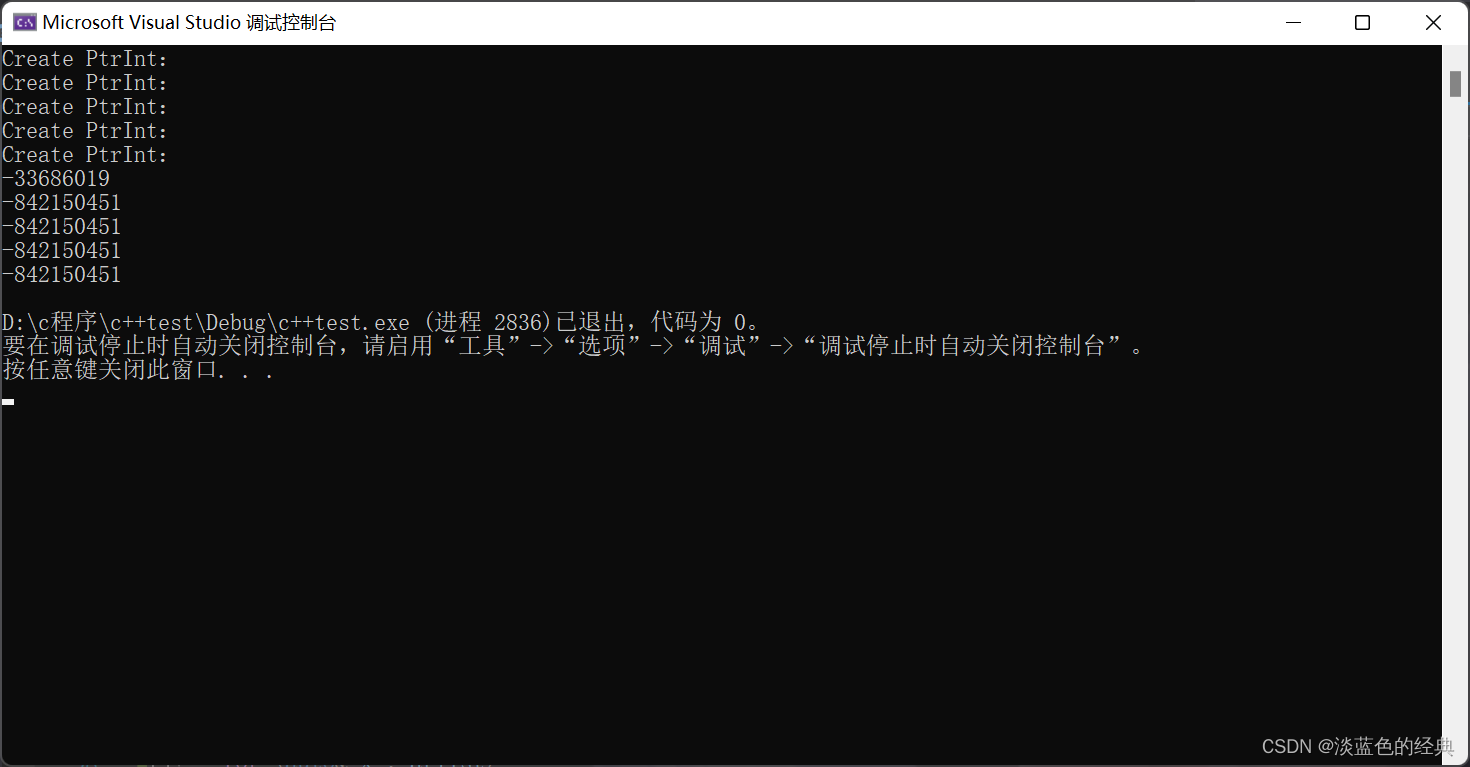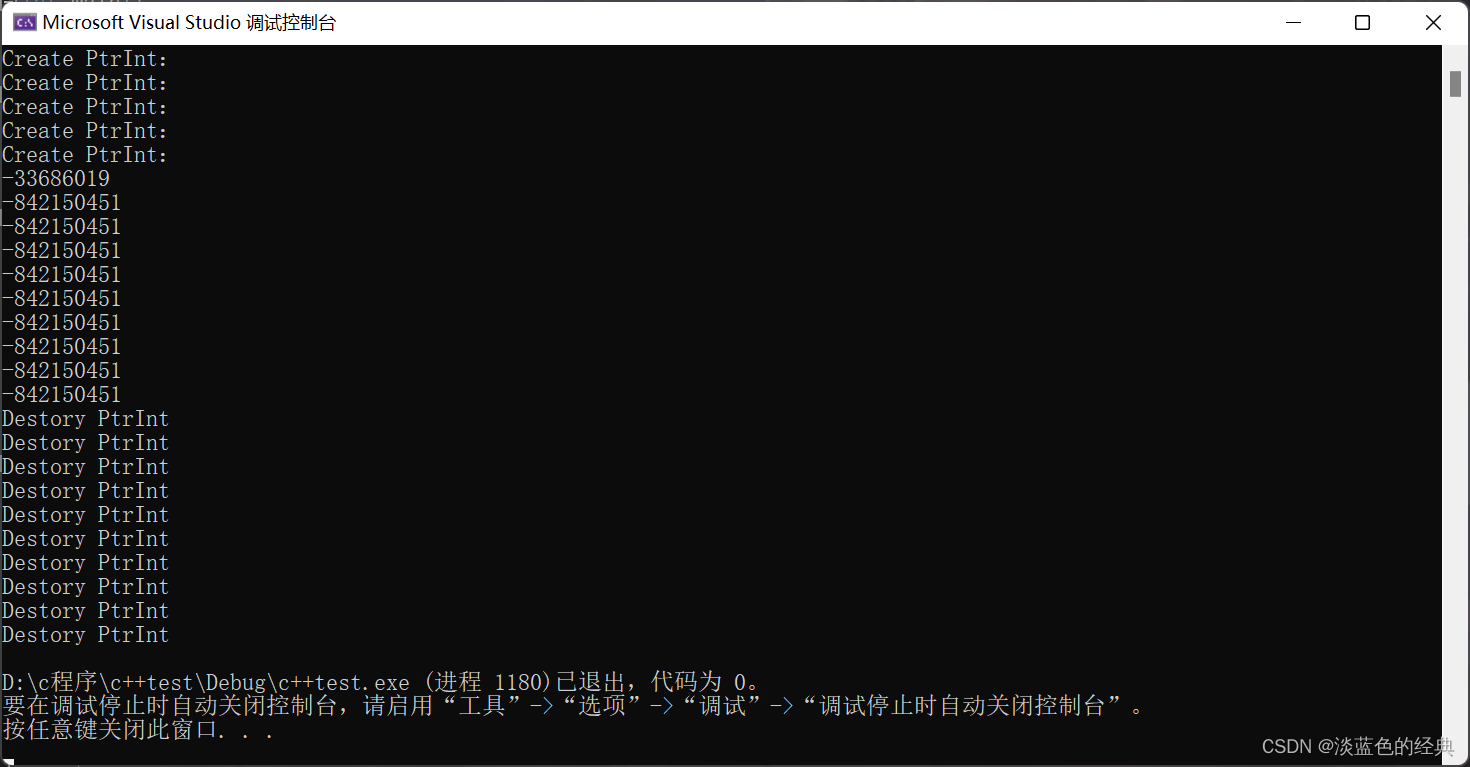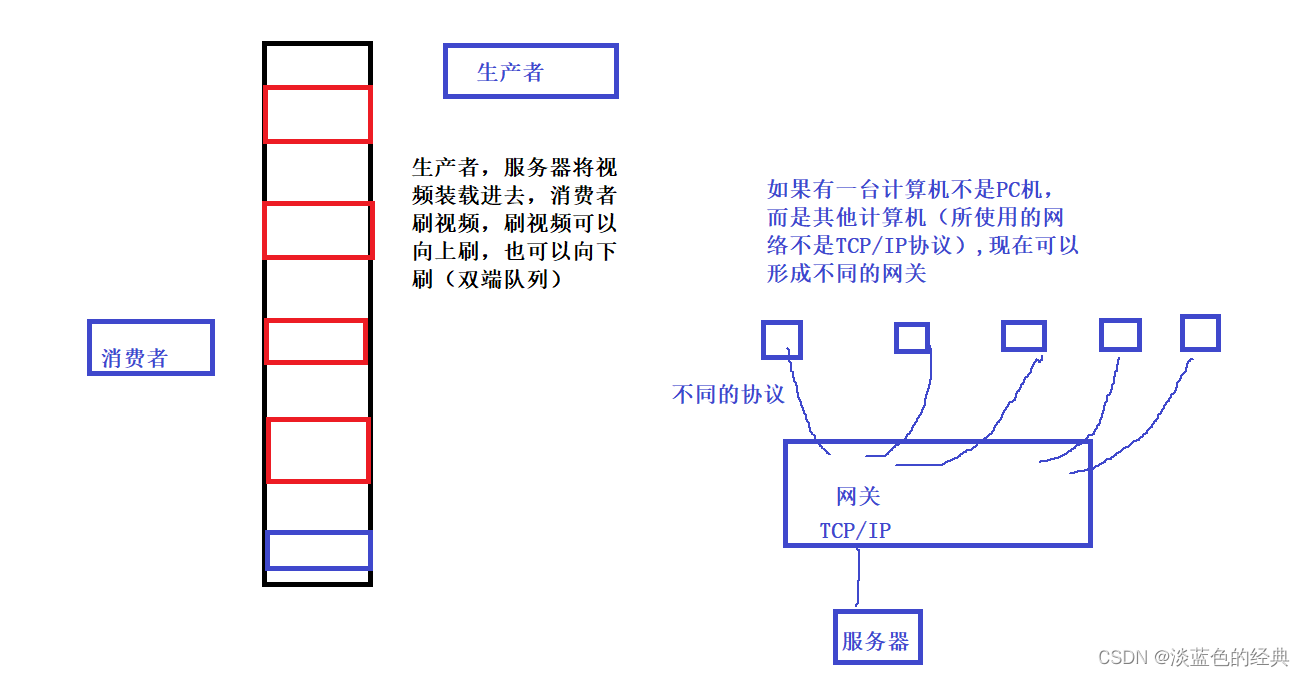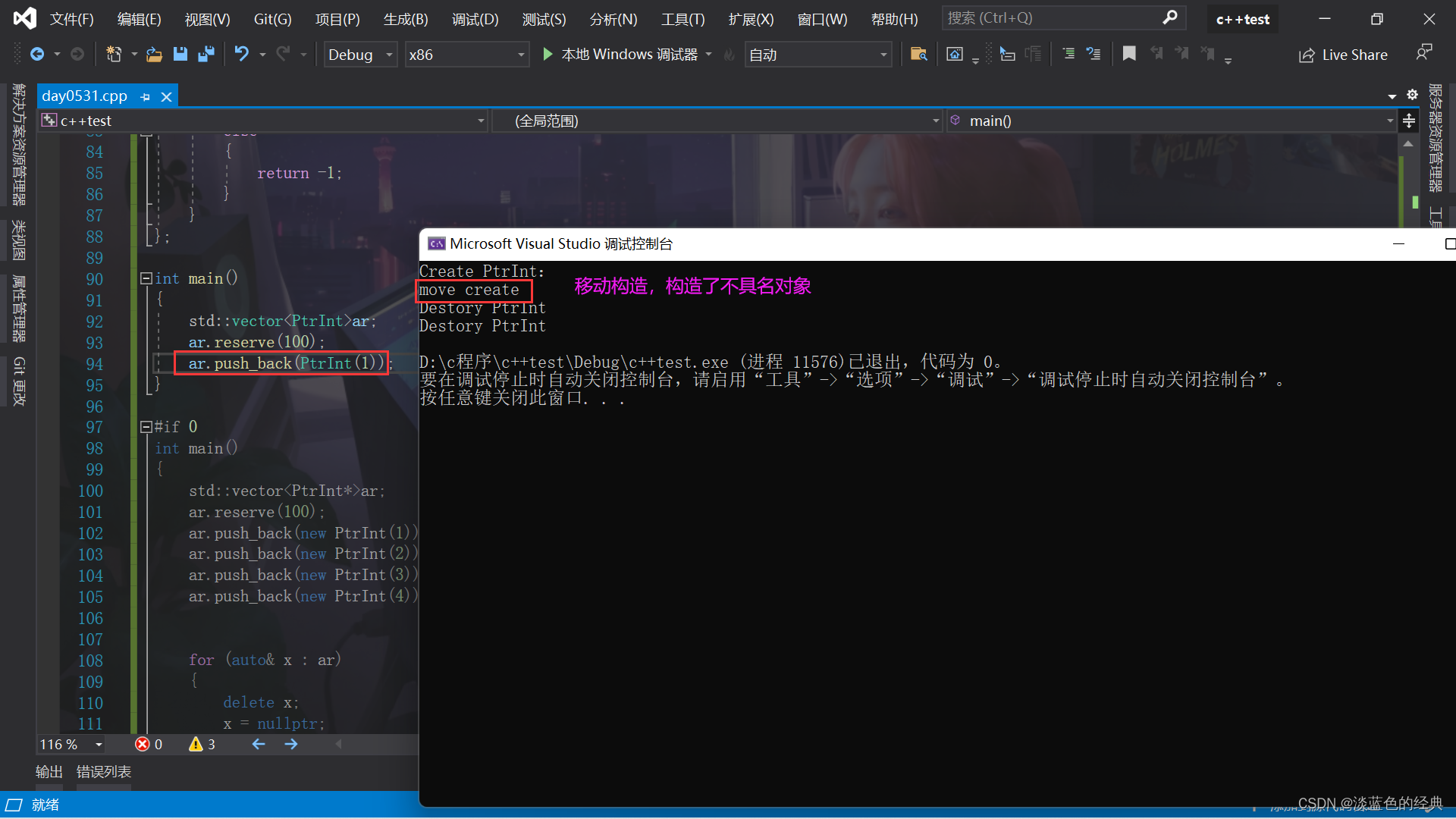关于vector的用法
#include<stdio.h>
#include<iostream>
#include<string.h>
#include<vector>
using namespace std;
class PtrInt
{
int* ptr;
public:
PtrInt(int x = 0) :ptr(new int[x])
{
cout << "Create PtrInt:" << endl;
}
PtrInt(const PtrInt& pt) :ptr(new int())
{
if (pt.ptr!=nullptr)
{
*ptr = *pt.ptr;
}
cout << "Copy Create:" << endl;
}
PtrInt& operator=(const PtrInt& pt)
{
if (this != &pt)
{
delete ptr;
ptr = new int();
if (pt.ptr != nullptr)
{
*ptr = *pt.ptr;
}
cout << "operator=()" << endl;
}
}
PtrInt(PtrInt&& pt) :ptr(pt.ptr)
{
pt.ptr = nullptr;
cout << "move create" << endl;
}
PtrInt& operator=(PtrInt&& pt)
{
if (this != &pt)
{
delete ptr;
ptr = pt.ptr;
pt.ptr = nullptr;
}
cout << "move operator=()" << endl;
}
~PtrInt()
{
delete ptr;
ptr = nullptr;
cout << "Destory PtrInt" << endl;
}
void Print()const
{
if (ptr != nullptr)
{
cout << *ptr << endl;
}
}
void SetValue(int x)
{
if (ptr = nullptr)
{
*ptr = x;
}
else
{
ptr = new int(x);
}
}
int GetValue()const
{
if (ptr != nullptr)
{
return *ptr;
}
else
{
return -1;
}
}
};
int main()
{
std::vector<PtrInt>ar;
for (int i = 0; i < 20; ++i)
{
ar.push_back(PtrInt(i));//构建无名对象
cout << "Size:" << ar.size() << endl;;
cout << "capacity" << ar.capacity() << endl;
}
}
#if 0
class Int
{
private:
int value;
public:
Int(int x=0):value(x){}
~Int(){}
};
int main()
{
std::vector<int>iar = {12,23,34,45,56,67,78,89};
std::vector<double>dar;
std::vector<int*>par;//最好不要存放指针,因为new开辟空间,一定不要忘记析构
std::vector<int>::reverse_iterator rit = iar.rbegin(); //逆向迭代器
int n = iar.size();
int* p = iar.data();
}
#endif
运行结果分析:

容量按照1.5倍增加,容量增容意味着要不断的创建空间,并且不断调用移动构造函数,和不断将对象析构,效率太低,可以直接调用reserve
int main()
{
std::vector<PtrInt>ar;
ar.reserve(200); //先预留200个空间,效率提高,只申请空间,不创建对象
ar.resize(200); //改变存储元素的个数,直接创建200个对象,并且容量为200
for (int i = 0; i < 20; ++i)
{
ar.push_back(PtrInt(i));//构建无名对象
cout << "Size:" << ar.size() << endl;;
cout << "capacity" << ar.capacity() << endl;
}
}
迭代器失效,指针指向的对象已经被释放掉
int main()
{
std::vector<PtrInt>ar;
ar.push_back(PtrInt(1));
ar.push_back(PtrInt(2));
ar.push_back(PtrInt(3));
ar.push_back(PtrInt(4));
ar.push_back(PtrInt(5));
std::vector<PtrInt>::iterator it = ar.begin();
ar.insert(it, PtrInt(6)); //调用移动赋值函数
for (auto x: ar)
{
x.Print();
}
ar.pop_back();
ar.erase(it); //迭代器失效,迭代器面向对象的指针
}
vector作为数组,如何使效率变高?(提前获取vector的大小,预留好空间)
关于List的用法
在相同的空间中,vector的存储密度比List的存储密度大
int main()
{
std::list<PtrInt>arlist;
for (int i = 0; i < 5; i++)
{
//arlist.push_back(PtrInt(i));
arlist.emplace_back(i);
}
for (auto& x : arlist) //尽量使用引用,因为使用引用不需要调动拷贝构造
{
x.Print();
}
}
出现内存泄漏的情况
int main()
{
std::list<PtrInt*>arlist;
for (int i = 0; i < 5; ++i)
{
arlist.push_back(new PtrInt(i));
}
for (auto& x : arlist)
{
x->Print(); //无法调用析构函数去析构PtrInt
}
return 0;
}

解决方案(智能指针)
int main()
{
std::list<std::unique_ptr<PtrInt>>arlist;
for (int i = 0; i < 10; ++i)
{
arlist.push_back(std::unique_ptr<PtrInt>(new PtrInt(i))); //智能指针,防止内存泄漏
}
for (auto& x : arlist)
{
x->Print();
}
return 0;
}

List的排序算法(当排序量较少是,一般采用快排)
vector和list的区别



关于迭代器失效

如果需要高效的随机存取,选择vector(深入理解计算机系统1,6,9章)
场景题目一:页面置换算法,如何设计一个页面置换算法
场景题目二:刷视频,如何让视频刷的更快(生产者消费者模型)

关于vector里面存放指针的情况

补充点:关于push_back和emplace_back的区别

























 1095
1095











 被折叠的 条评论
为什么被折叠?
被折叠的 条评论
为什么被折叠?










